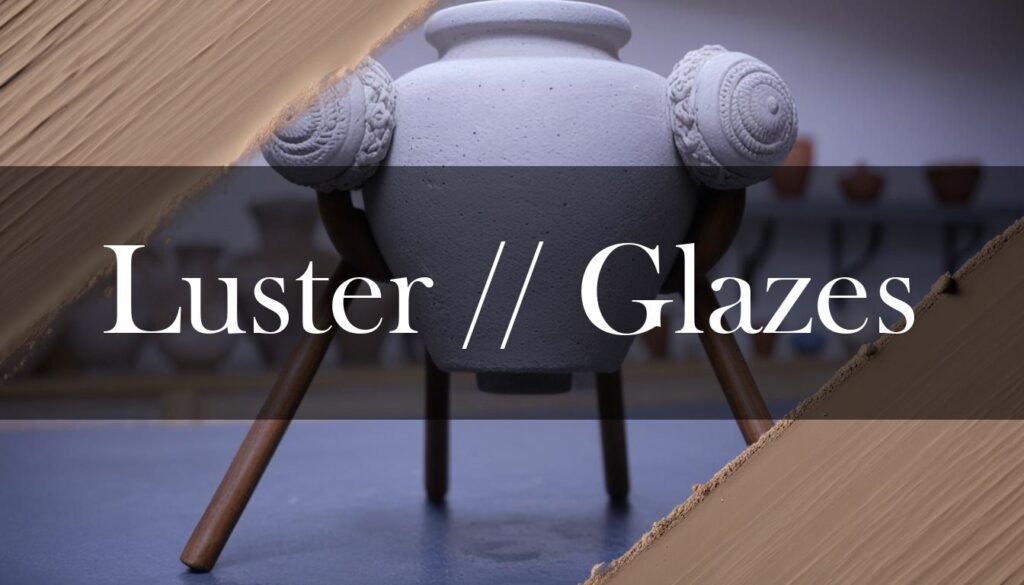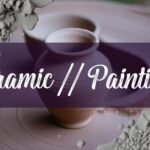Luster glazes, with their mesmerizing, iridescent, metallic finishes, have captivated ceramic artists for over a millennium. Originating in the Islamic world during the 9th century, this decorative technique has traversed cultures and eras, leaving a shimmering trail through Mesopotamia, Egypt, Spain, Italy, and eventually experiencing a revival in 19th century England. The allure of luster lies in its ability to transform ordinary glazed surfaces into objects of ethereal beauty, evoking a sense of luxury and wonder. The process involves applying metallic oxides over a previously fired and glazed ceramic piece, followed by a second firing in a reduction kiln to unlock the characteristic iridescent effect. From the early polychrome designs of Baghdad to the golden-greenish hues of Hispano-Moresque ware and the ruby-reds of Renaissance Italy, lusterware stands as a testament to the ingenuity and cross-cultural exchange of ceramic artisans. (See details on Wikipedia, the DeMorgan Collection, and Britannica)
Achieving a flawless luster finish requires careful attention to detail and a deep understanding of the materials and processes involved. Before you even think about opening your jar of precious luster, start by ensuring your ceramic piece is impeccably clean. Any dust, fingerprints, or oils can wreak havoc on the final result, so a thorough wash with dish soap, followed by a rinse and careful drying, is essential. When it comes to applying the luster, think thin, even coats. Whether you’re brushing, sponging, airbrushing, or dipping, the key is to avoid overloading the surface. Brushing requires a soft, clean brush dedicated solely to lusters, while sponging can create unique textured effects. Airbrushing, when done with thinned luster, offers a smooth, even coverage, and dipping is ideal for smaller items requiring uniform coating. Remember, layering lusters can create complex effects, but be cautious not to over-mix colors, as this can dull their vibrancy. (Tips from the Florida Porcelain Artists, Ceramic Arts Network, Ceramics Made Easy, and PeliGlass EU)
“Layering lusters can create complex effects, but be cautious not to over-mix colors, as this can dull their vibrancy.”
Firing luster glazes is a delicate dance with temperature and ventilation. These glazes typically mature at low temperatures, around cone 022 to 017 (approximately 600°C to 800°C). Overfiring can weaken the colors, while underfiring may cause the luster to simply powder off. Equally important is proper kiln ventilation. As lusters fire, they release fumes that can not only affect the final result but also pose health hazards. Ensure your kiln is well-ventilated, with peep-holes open to allow for adequate airflow. This helps prevent contamination and ensures the development of the desired iridescent finish. Also, remember to give your ware enough drying time before firing. Some potters swear by a 24-hour drying period, while others proceed once the luster is dry to the touch, so experiment and see what works best for you. (Info from Marjon Ceramics, Ceramic Arts Network, and Clay King) For more information, see Firing Temperatures: A Potter’s Guide. For more information, see Luster Glazes: A Potter’s Guide.
- Firing lusters requires patience and attention to detail.
- Ensure proper ventilation and avoid overfiring.
- Experiment with drying times to find what works best for your specific glaze and environment.
Safety should always be a top priority when working with luster glazes. These glazes contain precious metals and volatile compounds that can be harmful if not handled correctly. Always wear a NIOSH-approved respirator to avoid inhaling toxic fumes, and protect your hands with fitted vinyl gloves. Working in a well-ventilated area is crucial, and when possible, applying lusters outdoors is ideal. When firing, ensure your kiln is in a well-ventilated space and keep those peep-holes open. Store lusters in tightly sealed containers, away from heat and light, and consider refrigerating certain colors like pinks and reds to prolong their quality. Clean your brushes thoroughly with appropriate solvents like mineral spirits or acetone, and dispose of any waste materials according to local hazardous waste regulations. By taking these precautions, you can safeguard your health and well-being while exploring the enchanting world of luster glazes. (Safety advice from Laguna Clay and the Florida Porcelain Artists)





